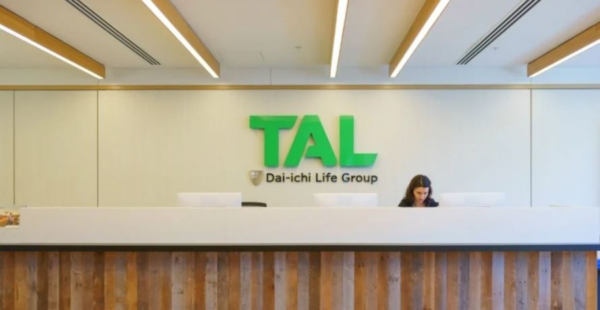New retail life sales down by 50% – APRA

New retail life insurance business sales have dropped by more than 50% in the past five years and for every new retail policy coming into force three are lapsing, according to the Australian Prudential Regulation Authority (APRA).
Detailing “a complex set of challenges” facing the life insurance sector, APRA executive board member, Suzanne Smith told an actuaries summit that complex products and declining financial adviser numbers – down 43% over the last five years – had also left many consumers struggling to grasp the value and scope of their coverage.
As well, Smith said that the industry’s long-term sustainability had been questioned due to some pricing practices and legacy product design, while product innovation had not kept pace with societal, demographic and lifestyle changes.
“Unfortunately, consumer trust in the industry has also eroded, driven not only by out-dated product design, but also by negative experiences with fluctuating rental and group premiums, poor claims processing experience in the group space and a confusing array of products,” he address said.
However, said that while the challenges were significant, they did represent an opportunity to rebuild relevance and trust.











Huge Congratulations to Canberra Pollies, ASIC, etc and the Banks, Life Companies & FSC.
LIF combined with FARSEA has been some of the biggest Regulatory FAILS EVER.
Who will be held accountable in Canberra ? No one.
Let’s blame the Advisers still working and the Advisers that have been forced out hey Canberra.
Love how APRA can’t acknowledge the role they have played in decimating the industry, nor the impacts of other government departments like ASIC, and the introduction of of LIF. It’s obviously all the insurers fault with product design and pricing, according to them.
Do these government bodies ever ask themselves, what would have been the outcome if free market forces prevailed and there was no LIF, no changes (dilution in quality) to income protection policies, no government policy intervention, fair/commercial adviser commission rates?
The 50% decline in new business caught my eye, but the truly staggering piece of information is that 3 policies are lapsing for every new policy coming into force. There is no sugar coating these disastrous numbers. Our life insurance industry is in a death spiral. The scale of this disaster is worthy of a Royal Commission. Shame on all the clueless government bureaucrats and greedy life insurance executives who caused this.
APRA’s very own IDII sustainability measures have played a pivotal role in this along with blatant price gouging from greedy insurers.
Congratulations to the insurance company executives of the last 10 years for their outstanding performance.
Who would’ve thought backing LIF in a deliberate strategy to remove advisers would lead to such a downturn in new business. Compounded by constant increases in premiums to supposedly improve sustainability, but in fact making cover unaffordable.
Undoubtedly they’re all still receiving bonuses, so they’re happy. Talk about fiddling…Rome burning!
…they (Insurers) thought they’d replace the advisers with their backpacker call-centre’s until the Royal Commission put a stop to it…
The life insurance company executives did more than back LIF. They agitated for it, designed it and lobbied for it. Remember all the churn accusations? They white-anted financial advisers and keep pushing the regulators until they got their way with ASIC’s REP413 investigation. They then worked with ASIC to bias the investigation by loading it with advisers writing high volumes (ie. suspected churners). ASIC then gleefully promoted the results as a representative sample and use it to defame our profession (outrageous behaviour from a regulator), leading to Trowbridge, LIF and ultimately the Royal Commission. It all stems back to the meddling by life insurance executives who stupidly cooked the golden goose. What a pack of fools. The Australian public is the real victim unfortunately.
Maybe now is the time to admit that the LIF policy isLIF was based on a failure and was always going to fail because it was built on false assumptions. We need to do a complete review of the LIF policy, the Trowbridge report and the ASIC report that LIF was based on. There is academic peer reviewed research reports that were conducted prior to LIF that showed that this would be the outcome of policies such as LIF.
maybe it says theres was lots of churning before?
No. Research by ASIC subsequent to Rpt 413 stated churn wasn’t & isn’t a major issue in Australia, confined to 1-2% of advisers. This was easily monitored & controlled by insurers, who could have stopped any churning at the press of a button. Unfortunately ASIC didn’t bother doing the correct reseaarch prior to pushing LIF.
In other words Churning was a trojan horse used by ASIC, FSC, and various other vested interest groups to acheive pre-defined outcomes to further their own interests – not those of the consumer.
Yep and Karma is a BITCH !!!!
Yay Canberra!
Reinstate fair remuneration for how difficult it is these days to get someone insured and then use data to monitor for the small percentage of advisers that might churn for profit. Problem solved. Only way out of this is to incentivise advisers to get new clients insured.
Good luck refloating that sinking ship.
Only governments could destroy 150 year old industry in only a couple of years.
You were conned by vested interests, while you lampooned hard working advisers.
Congratulations to the brain dead fools who manufactured its demise.
Maybe next time you will do your homework before destroying another Australian Industry, but I doubt it.
Coal and Gas and every industry that relies on stable continuous electricity will be next…
How do those LIF reforms look now! 🤣🤣🤣
APRA’s Suzanne Smith either ignorance, or a pig headed inability for self evaluation. APRA and politicians are a key reason for this. They should own it.
What a stuff up! You couldn’t write this script if you wanted to. ASIC, who have always hated commissions, started off this nonsense with Report 413 when one group of churning advisers at an AFSL owned by a insurer were thrown to the wolves by the man who ran that insurance company.
The banks, who were by that time seeking to sell their life insurance arms, each adopted LIF to polish up the old banger, before selling it to overseas money, just like putting on new tyres, and a banana in the diff, before advertising your old banger. The idiots who run the non-bank life insurers jumped all over LIF, cutting distribution costs by 50%, and “trousering” the additional short-term profit. More CEO bonuses.
And then a bank friendly Coalition government were convinced by the banks that FASEA was a good idea because the banks were convinced it could eliminate the self-employed adviser competition. The banks even funded FASEA for three years to the tune of $11.5 million. In truth, the banks now actually owned a Government entity – FASEA.
Then after a series of softly softly warnings to the life insurers about capital adequacy & insolvency, but no direct consultation with the life insurers or advisers, the APRA introduced the nuclear option in Oct 21– watered-down income protection contracts purportedly to reintroduce “sustainability.” There had been a change that the hierarchy at Apra and the APRA Board was convinced that aggressive action was required. Apparently the aim was to have us, the advisers with the only relationships with clients, convince our clients to change from their quality legacy IP contracts to something that resembled income protection only in name. Like an “entry-level” model in a luxury car makers model list
The remaining advisers revolted. By now we knew exactly what what would happen if we replaced expensive but high quality professional level income protection contracts with the rubbish dictated by Apra. By that time most of us understood what Standard 5 and Standard 6 meant when it came to replacing income protection contracts.
The final kick to the sideline was that the life insurers suddenly worked out that advisers weren’t playing by the APRA script, and watched as new business slowly decreased, and took advantage of some poor regulation by both ASIC and Apra to gouge out the premiums of existing policyholders.
But then we went into golden point because those measures still didn’t bring in new business, which as we know is the lifeblood to the pool. The answer that was the introduction of DURATION BASED PRICING, the actuarial code for big upfront discounts on new business, with premium catch ups from year two or three onwards. That is reflected in the above statistics where for every new policy, three are lapsing.
It’s called market failure folks and it’s coming to get us. We may end up with three large insurers and no competition, just like the big banks.
AND APRA STILL DONT GET IT !
An excellent recap on some of the key factors that have pushed personal insurance into a death spiral OR.
One other crucial factor I would add is the massive increase in anxiety/depression claims, and insurers’ unwillingness to take on the powerful mental health lobby to properly investigate and curtail these claims, or to provide client optional exclusions for lower premiums. The insurers decided it would be much easier to just pay these claims without question, and pass the costs on to existing policyholders by way of increased premiums.
APRA’s junk IP products are partly an attempt to solve this problem, without incurring the wrath of the mental health lobby. But of course those products are so bad, very few advisers would take the regulatory risk of recommending them regardless of price. However if advisers had the option to offer policies with mental health excluded and a large premium reduction that reflected the massive cost of those claims, most advisers would have eagerly done so.
I had to look this up…
If you put banana peels in a car’s differential, sometimes it’ll run noticeably more quietly for a few hours. Handy if you’re trying to sell a car with a bad diff.
😉